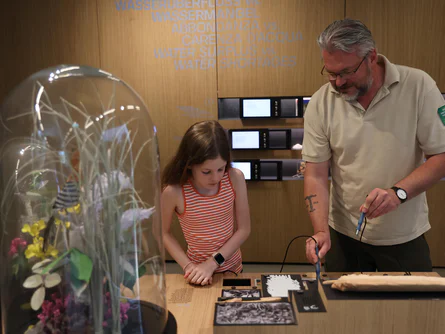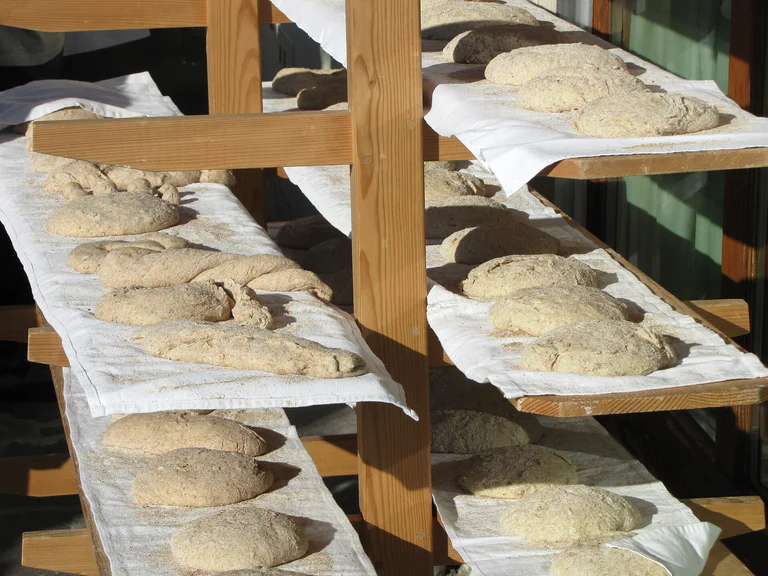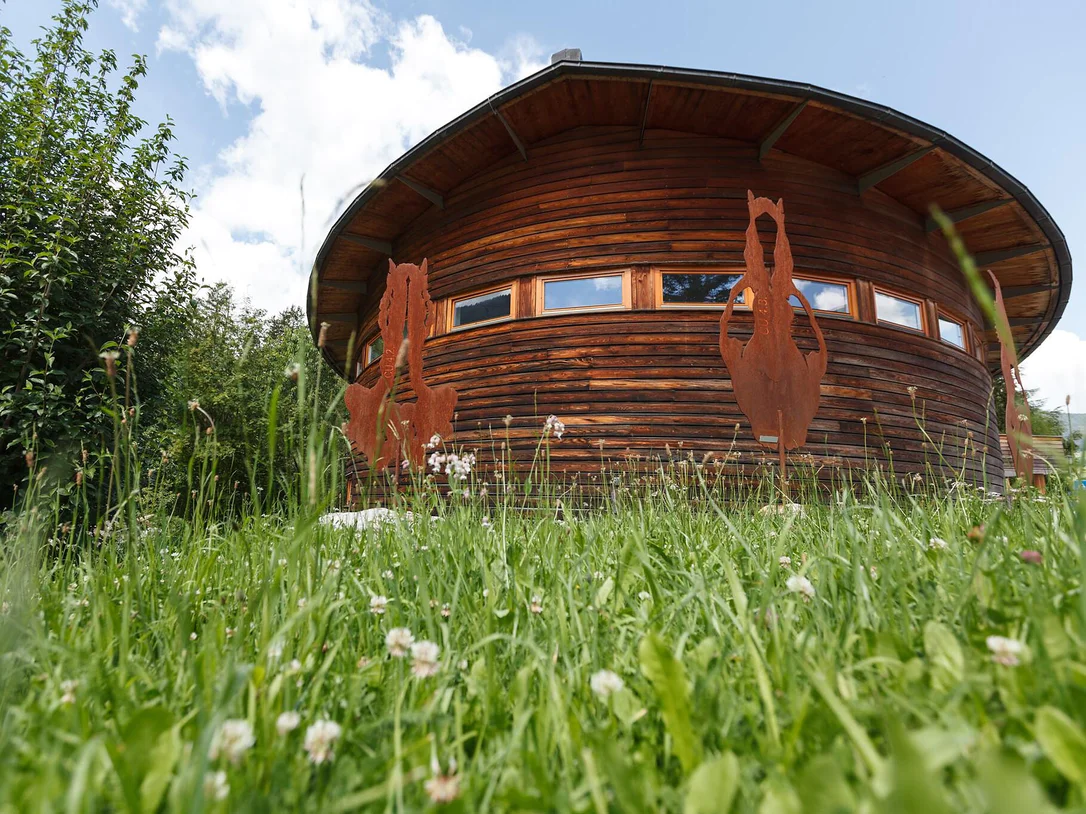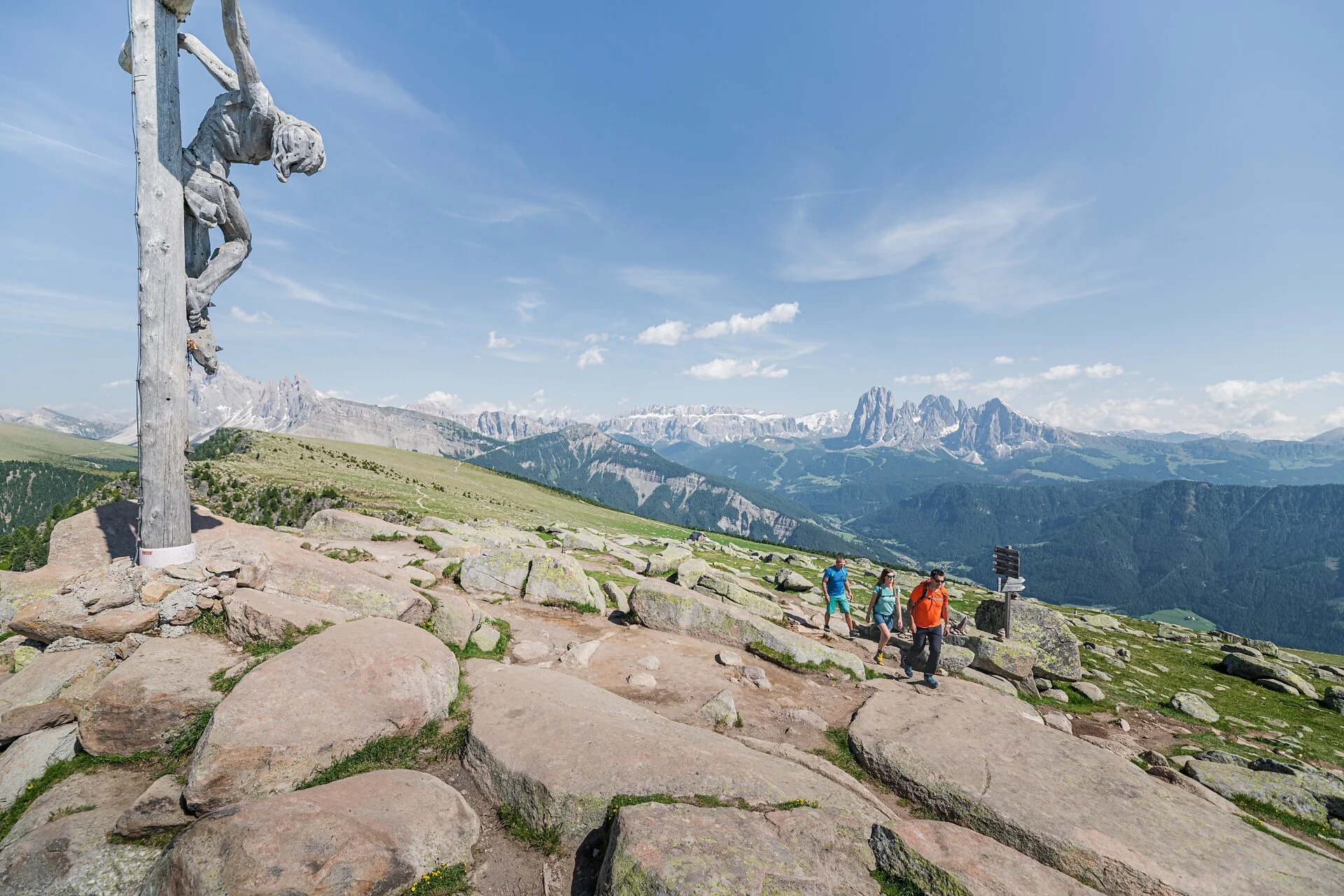It is therefore no coincidence that the permanent exhibition in the new Texelgruppe Nature Park House in Naturno is dedicated to water. Under the motto "Towards the water", the journey takes visitors not only upwards through the impressive, snail-shaped building, but also from the Adige river on the valley floor to the eternal ice of the glaciers - and through the various altitude levels of the Texelgruppe Nature Park.
Adults and children can experience the nature park in a completely new way and discover the complex interrelationships in a playful, varied and hands-on way. At each station of the new 600 square metre permanent exhibition, visitors can lend a hand and work their way through all the habitats: from Mediterranean to high Alpine, from dusty dry to precipitation-rich, from hot to icy cold.
Animals and plants found in the various habitats are presented like a cabinet of curiosities. There are also special stations dedicated to the irrigation channels and alpine pastures, farms and meadows, where not only attention, but above all curiosity and a little bit of skill are required. The same applies to a technology game from times gone by, which gives an idea of how exciting the geology of the nature park is with its different rock formations and wealth of minerals. The journey through the exhibition even takes visitors to the eternal ice of the glaciers - and into the heart of a mudslide, which also allows visitors to experience the destructive power of water.
The Nature Park House itself is a building with clear lines that - like the landscape in the Texel Group Nature Park - strives upwards. And because, in addition to water, light is also a special feature of the nature park, large windows provide sun and light in the spacious rooms - and an unobstructed view of Naturno, its surroundings and, above all, the Naturno Sun Mountain. The best view of the mountain can be enjoyed from the terrace of the new Nature Park House, which faces the Sonnenberg. And thus the world into which visitors have just immersed themselves.
You can round off your visit to the new Nature Park House with a relaxed stroll through the newly created park next to the house. It features plenty of greenery and a water basin as a link to the exhibition theme and is named after the renowned butterfly collector and researcher Bernardin Astfäller, who himself came from Naturns.
Responsible for the Nature Park House: Annamaria Gapp
Address: Bernardin Astfäller Square 1
Telephone: 0473 668201
Opening period: March - November
Opening hours: Tue - Sat 9:30 - 12:30 and 14:30 - 18:00
July and August also open on Sundays
Closed on public holidays
Free admission














































































